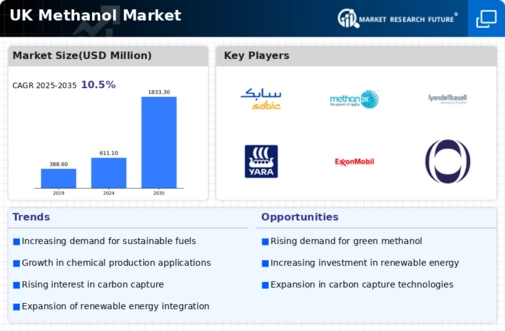The UK methanol market presents a dynamic landscape characterized by significant competition driven by a rising demand for methanol across various industrial applications, including fuel, chemicals, and plastics. This market environment is shaped by continuous innovation, technological advancements, and strategic partnerships among industry players, which enhance operational efficiency and production capabilities.
As environmental concerns and stringent regulations push industries toward sustainable practices, the methanol market is evolving to embrace greener production technologies and alternative feedstock sources. This competitive arena features both local and international companies, each vying to establish a strong foothold while adapting to the changing demands of consumers and regulatory frameworks.SABIC, a significant player in the UK methanol market, shows substantial strengths that amplify its competitive edge. The company holds a robust market presence due to its advanced production facilities and commitment to sustainability.
SABIC's integrated operations enable the seamless conversion of raw materials into high-quality methanol, which is utilized across several sectors, including automotive, construction, and pharmaceuticals.
The company depolys modern technology to improve manufacturing efficiency and reduce environmental effect, hence complementing the UK environmental objectives. Furthermore, SABIC’s strategic relationships within the UK not only bolster its operational efficiency but also position the firm as a leader in research and development, resulting in novel products designed to meet the increasing needs of the market.
Another prominent player in the UK methanol market, Haldor Topsoe concentrates on catalytic technology and solutions improving methanol production process efficiency. The company is well-known for its high-performance catalysts, technical advising services, and patented technologies that maximize methanol synthesis, therefore it is a vital partner for local producers. Haldor Topsoe adds great benefit by means of its vast knowledge of conversion processes and emissions control technology.
The company's strength lies in its ability to provide customized solutions that cater specifically to the UK market dynamics. In addition, Haldor Topsoe's proactive approach to mergers and acquisitions aids in expanding its technological capabilities and enhancing its market reach, ensuring that it remains at the forefront of innovation in the methanol sector within the UK. By continuously developing cutting-edge products and solutions tailored to changing industry demands, Haldor Topsoe solidifies its position as a key contributor to the growth and evolution of the methanol market in the region.



















